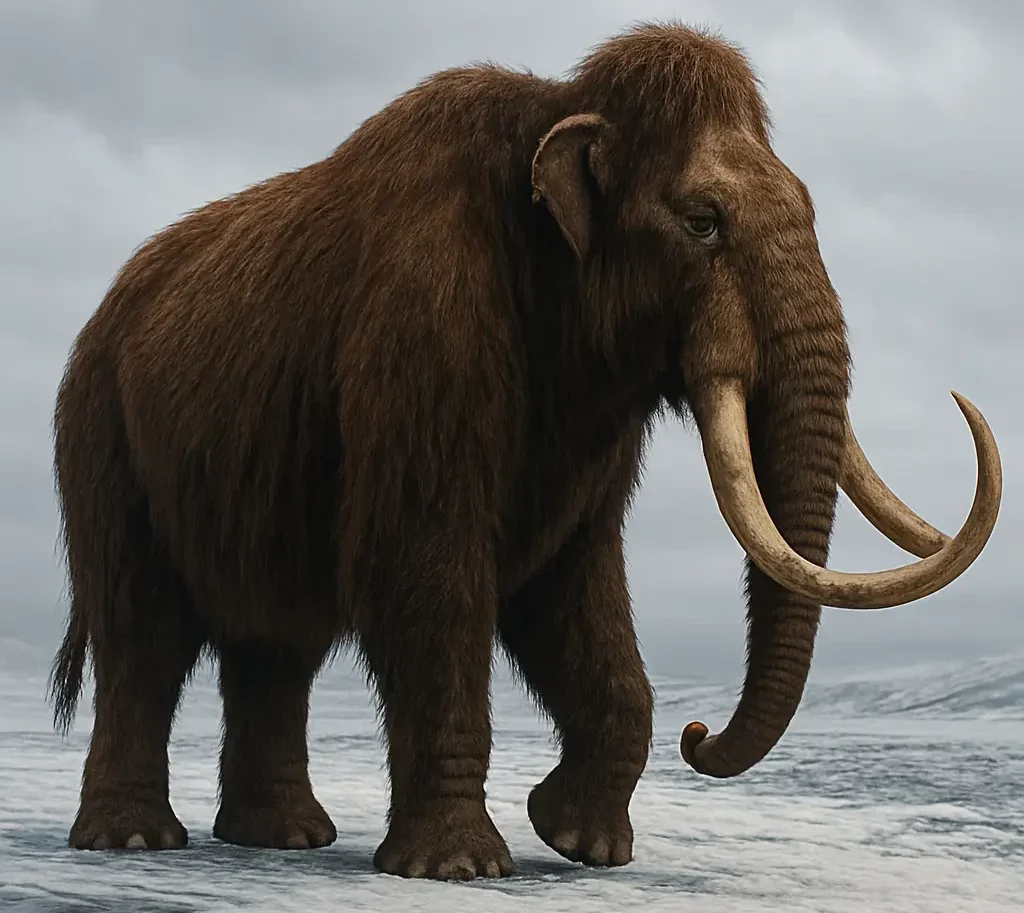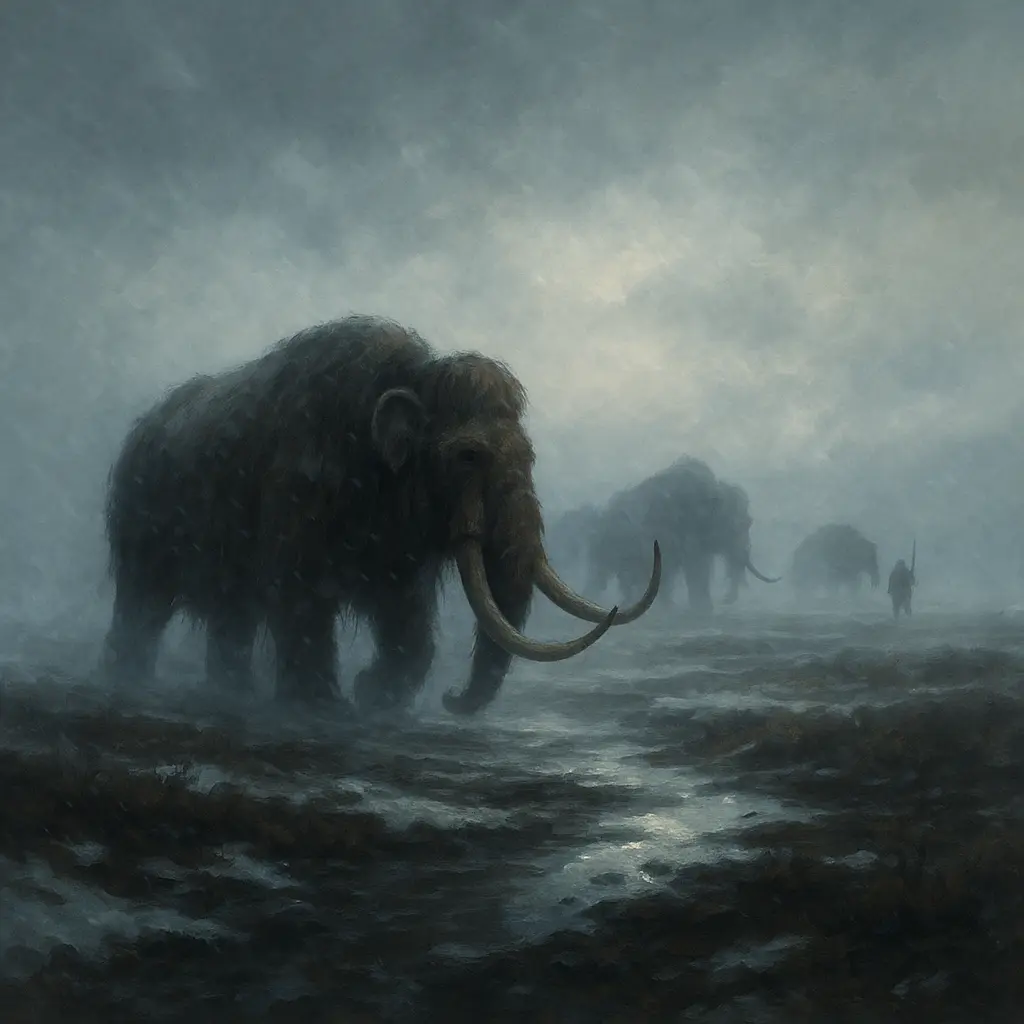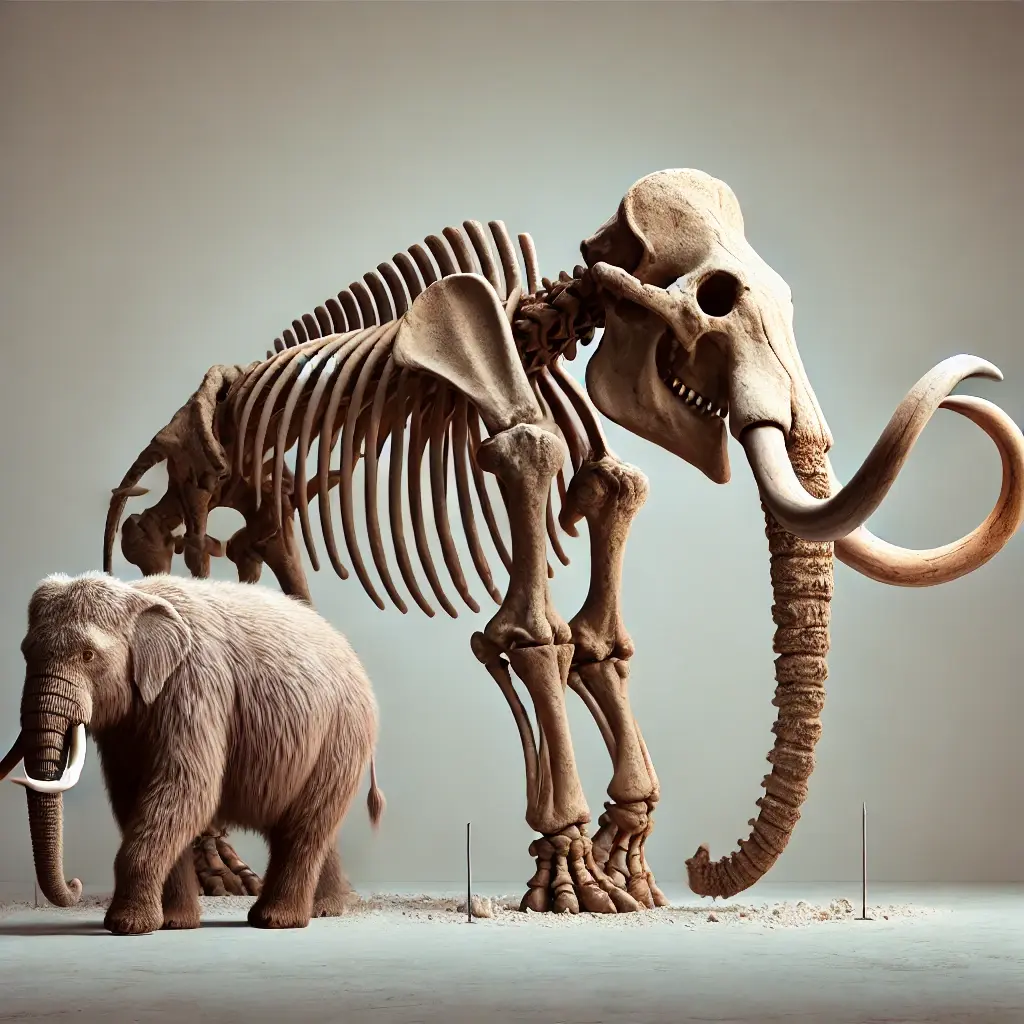Introduction to the Woolly Mammoth
The woolly mammoth was a massive, extinct species of elephant that roamed Earth during the Ice Age. With its long, curved tusks and thick fur, it was well adapted to freezing climates and lived across North America, Europe, and northern Asia.
Physical Features of the Woolly Mammoth

The woolly mammoth was a massive, prehistoric relative of the modern elephant, uniquely adapted to survive the harsh Ice Age environment.
🧥 Thick, Shaggy Fur:
It had a dense coat made of long outer hairs and a woolly undercoat, which insulated it against freezing temperatures.
👂 Small Ears:
Unlike today’s elephants, the woolly mammoth had small, rounded ears to minimize heat loss and prevent frostbite in cold climates.
🗻 Fat Hump on the Back:
A prominent fatty hump stored nutrients and energy, especially useful during long winters when food was scarce.
🦷 Massive Curved Tusks:
Its iconic tusks could grow over 15 feet (4.5 meters) long and were likely used for fighting, foraging, and digging through snow to reach vegetation.
🐘 Huge Size and Weight:
An adult woolly mammoth stood around 11 feet tall (3.3 meters) and weighed up to 6 tons (5,400 kg)—as heavy as a school bus.
Habitat and Lifestyle of the Woolly Mammoth

The woolly mammoth thrived during the Ice Age in a vast biome known as the Mammoth Steppe — one of the coldest and driest environments on Earth at the time.
🌍 Mammoth Steppe Habitat:
Stretching across northern Europe, Asia, and North America, this steppe was a treeless, frozen grassland with hardy vegetation like grasses, sedges, shrubs, and mosses. The dry, windy climate supported large herbivores that could graze across open plains.
🌱 Diet and Feeding Habits:
Woolly mammoths were herbivores. They grazed on low-lying plants, including grass, woody shrubs, and even tree bark. During winters, they used their curved tusks to dig through snow and access buried food sources.
🧊 Adapted for the Cold:
Their thick fur, fat storage, and small extremities made them perfectly suited for life in freezing climates. They traveled in herds, much like modern elephants, and migrated seasonally in search of food.
🤝 Social Lifestyle:
Woolly mammoths lived in closely-knit herds, led by a matriarch. Young mammoths learned survival skills from the group, and they likely had strong social bonds and protective behavior.
Extinction – Why Did the Woolly Mammoth Disappear?

The woolly mammoth, once a dominant species of the Ice Age, vanished from most parts of the world around 10,000 years ago, with small isolated populations surviving until about 4,000 years ago on remote Arctic islands like Wrangel Island. Other Ice Age predators like the saber-toothed cat also faced similar extinction threats.
🔥 1. Climate Change and Melting Ice
As the Ice Age ended, Earth’s climate became warmer and wetter, transforming the vast mammoth steppe into forests and swamps. These new ecosystems could not support the grass-dominated diet of the woolly mammoth, leading to food shortages and stress on their populations.
🏞️ 2. Shrinking Habitat
With glaciers retreating, their cold-adapted range shrank rapidly. The loss of open grasslands and the spread of dense forests made it hard for mammoths to roam, graze, and survive as they once did.
🏹 3. Overhunting by Humans
Early human hunters followed migrating herds and hunted woolly mammoths for meat, bones, and fur. Archaeological sites show evidence of mammoth bones near human settlements. Some scientists argue that overhunting may have accelerated their extinction, especially as their population was already under environmental stress.
🧬 4. Genetic Decline in Isolated Populations
The last remaining woolly mammoths, such as those on Wrangel Island, suffered from inbreeding and loss of genetic diversity. This made them more vulnerable to disease and environmental changes, ultimately sealing their fate.
Can We Bring the Woolly Mammoth Back?
Geneticists are exploring the idea of bringing the woolly mammoth back to life through cloning and gene editing. Using DNA from frozen mammoth remains, some believe that we could recreate a hybrid mammoth-elephant species in the near future.
Fascinating Facts About the Woolly Mammoth

The woolly mammoth was about the size of a modern African elephant.
Their tusks grew continuously and were used for digging snow or fighting.
Some populations survived on isolated islands thousands of years after mainland extinction.
Frozen carcasses have been found with skin, organs, and even food in their stomachs.
Conclusion
The woolly mammoth is one of the most iconic prehistoric animals in history. Its impressive size, thick fur, and mysterious extinction make it a subject of scientific curiosity even today. As science evolves, we may one day walk alongside creatures like the woolly mammoth once more.

